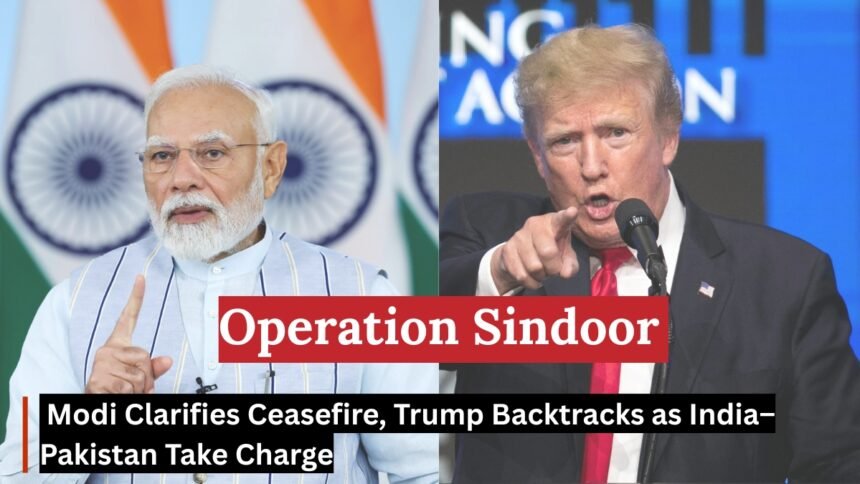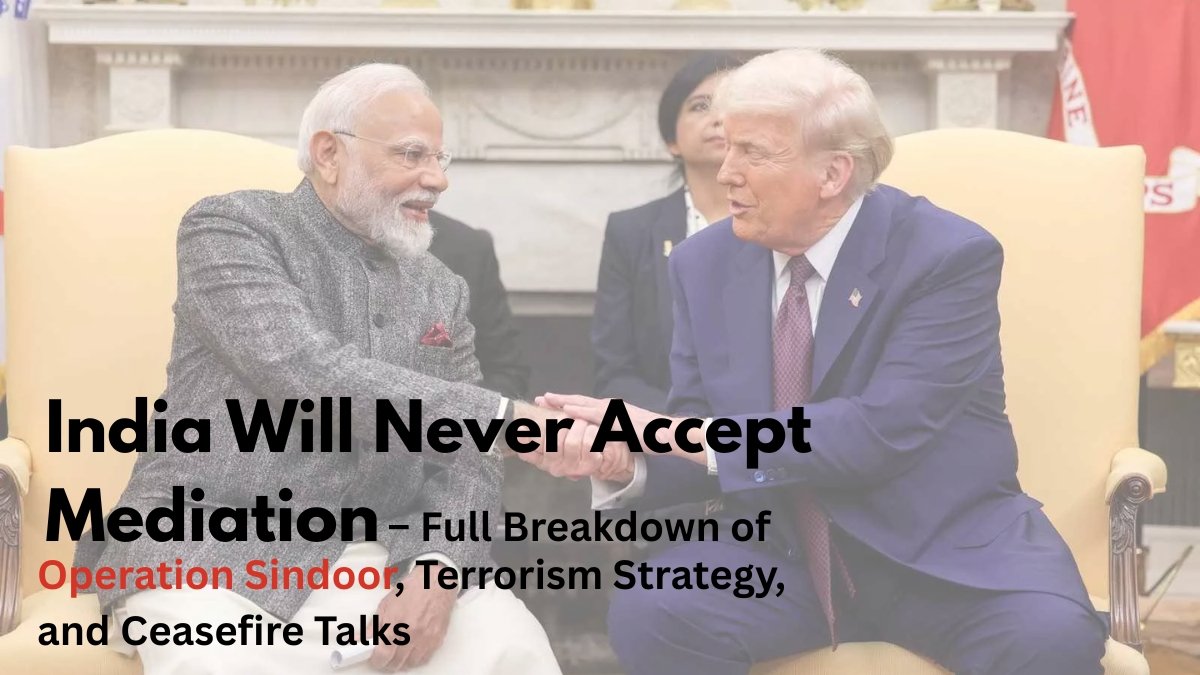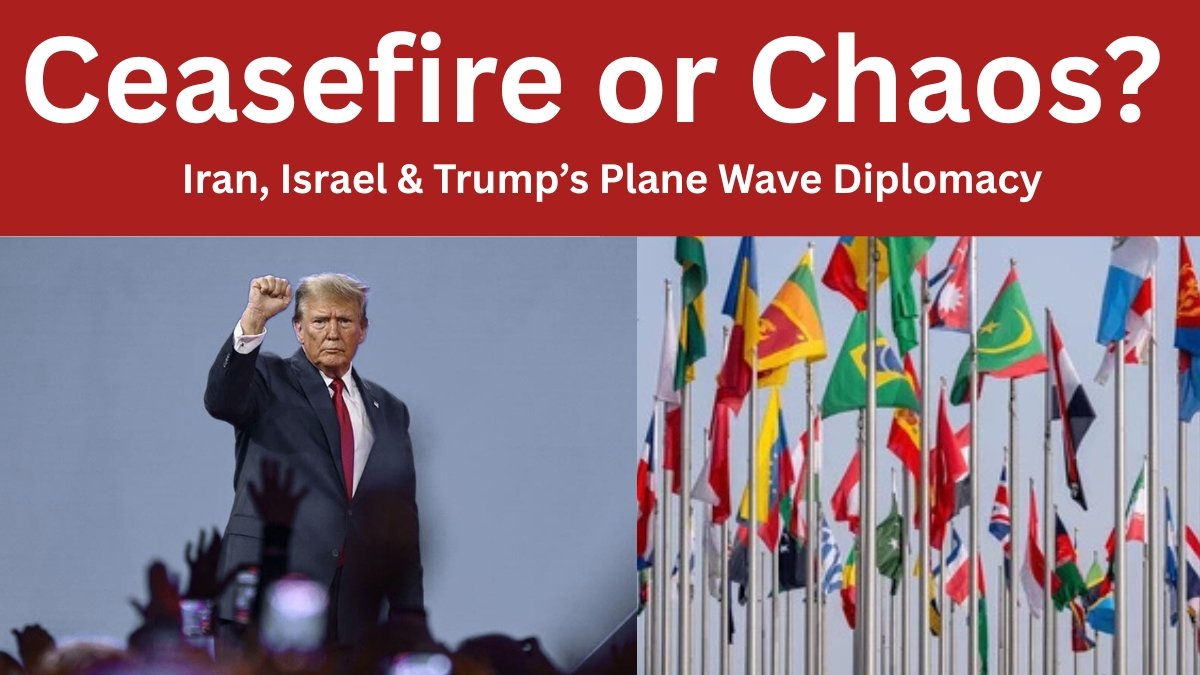Operation Sindoor : In a dramatic turn of global diplomacy, “Operation Sindoor” has emerged as a defining moment in India-Pakistan relations. What started as a cross-border military response by India following a deadly terror attack has now evolved into a narrative of strategic clarity and leadership.
Prime Minister Narendra Modi has publicly corrected recent claims by former U.S. President Donald Trump, firmly stating that the ceasefire agreement was a result of direct military communication between India and Pakistan—with no third-party mediation involved.
In response, Trump has taken a surprising U-turn, now acknowledging that the decision to halt escalation was made solely by the two South Asian nuclear powers. This evolving story signals a new chapter in regional autonomy, where India asserts its diplomatic independence while reshaping its image on the global stage.
READ MORE :- India Will Never Accept Mediation” – Full Breakdown of Operation Sindoor, Terrorism Strategy, and Ceasefire Talks
1. Modi Sets the Record Straight
On June 18, Prime Minister Narendra Modi spoke with U.S. President Donald Trump—his first discussion since the April 22 Pahalgam terrorist attack and India’s May 7 Operation Sindoor in Pakistan. Modi made it explicitly clear that:
- All ceasefire discussions occurred directly between India and Pakistan’s military channels, initiated at Islamabad’s request.
- There was no U.S. mediation, nor any talk of a U.S.–India trade deal to influence the pause in hostilities .
- India firmly rejects third‑party intervention, viewing terrorism as an act of war and asserting national sovereignty.
Foreign Secretary Vikram Misri confirmed that Modi emphasized the “new normal” stance—terrorism is war, and policy decisions are made in full political consensus.
2. Trump’s U‑Turn
Previously, Trump loudly claimed he personally brokered the ceasefire by threatening trade consequences and mediating between the two countries .
But in a surprising shift from the Oval Office on June 19, after hosting Pakistani Army Chief Asim Munir, Trump conceded that this ceasefire was the product of “two very smart leaders” – Modi and Munir – deciding bilaterally not to escalate into full‑blown war.
“Two very smart people decided not to keep going with that war… those are two big, big nuclear powers,” Trump noted, acknowledging their direct role.
3. Trump Hosts Pakistani Army Chief
On June 18, Trump held a private lunch at the White House with General Asim Munir, marking the first solo meeting between a Pakistani Army Chief and a U.S. President. Trump praised Munir for playing an “extremely influential” role in stopping further conflict .
He emphasized that both India and Pakistan prioritized peace after recognizing the risk of a nuclear confrontation .
4. What This Means for India–Pakistan Ties
- Diplomatic maturity: Modi’s clarifications assert India’s stance on sovereignty—rejecting third-party intervention in security decisions.
- Regional stability: Trump’s softened tone could pave the way for reduced external interference and a spotlight on bilateral military dialogue.
- Economic openness: Trump confirmed ongoing trade talks with both India and Pakistan, raising hopes of future economic engagement.
5. What to Watch Next
| Focus Area | What to Expect |
|---|---|
| Operation Sindoor | Whether India continues limited cross‑border action or shifts strategy after ceasefire. |
| Indo‑Pak military hotlines | Will they remain active, and will dialogue at military or diplomatic levels deepen? |
| U.S. engagement | Will Washington respect India’s refusal for external mediation, while promoting trade in both countries? |
Key Takeaway
Operation Sindoor revealed a geopolitical moment where India decisively asserted military autonomy, Modi shaped the diplomatic narrative, and Trump, finally, recognized the bilateral efforts by both nations. The result? A ceasefire brokered by South Asian leaders themselves—a clear demonstration of New Delhi’s strategic posture and regional maturity.


















